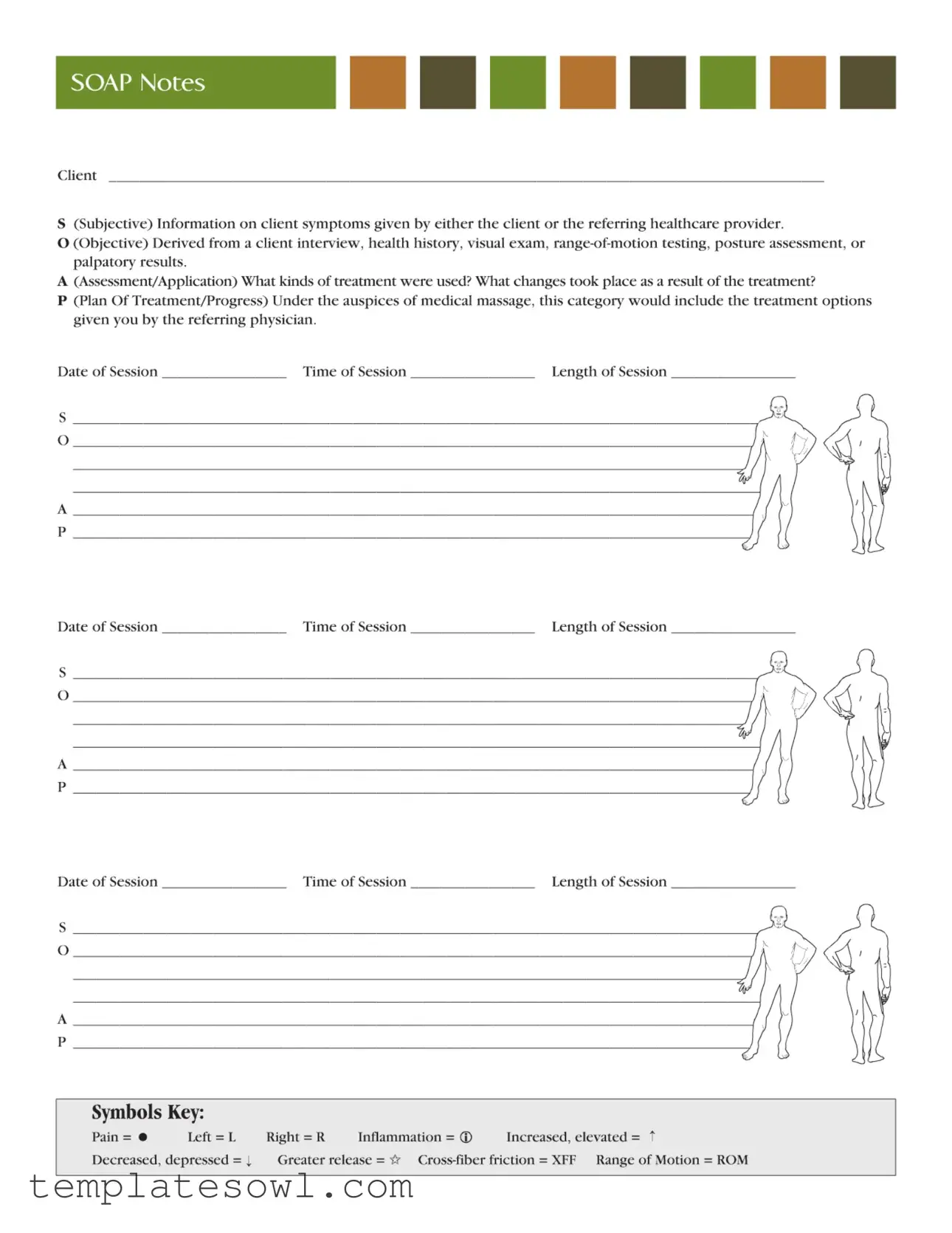What is the purpose of the SOAP Medical Massage form?
The SOAP Medical Massage form serves to document essential information related to a client's massage therapy session. It assists therapists in understanding the client's specific goals, techniques applied, and any relevant medical history. This structured approach helps ensure that treatment is tailored to meet individual needs and can be communicated clearly among healthcare providers.
What information is collected in the 'S' section of the form?
The 'S' section stands for "Subjective" and focuses on the client's goals for the session. Here, clients express what they hope to achieve from the treatment, such as pain relief or increased flexibility. Gathering this information helps therapists align their techniques with client expectations and provides a foundation for measuring progress over time.
How does the 'O' section differ from the 'S' section?
The 'O' section stands for "Objective" and includes neutral observations made by the therapist during the session. This might encompass visual and palpable findings, like muscle tightness or inflammation. Unlike the 'S' section, which captures the client’s personal goals, the 'O' section focuses on measurable data that can be used to assess changes in the client's condition during therapy.
What is documented in the 'A' section of the form?
The 'A' section refers to "Assessment." Here, the therapist notes any resulting changes that are both subjective and objective, analyzing the effectiveness of the techniques used. This evaluation may highlight improvements in symptoms or areas requiring further attention. Documenting observations in this manner helps in planning future treatments.
What information should be included in the 'P' section?
The 'P' section stands for "Plan." This area outlines the massage plan and any self-care homework prescribed to the client. It may include recommendations for additional therapies, specific exercises, or strategies for continuing care at home. Clear communication here can empower clients to take an active role in their recovery.
Is the SOAP Medical Massage form associated with any particular agency?
Yes, this form was created as a resource by the American Massage Therapy Association (AMTA). While it provides a structured way to document and communicate essential information, it is important to note that the AMTA is not held liable for services provided using this form, emphasizing the need for practitioners to adhere to their professional standards.

